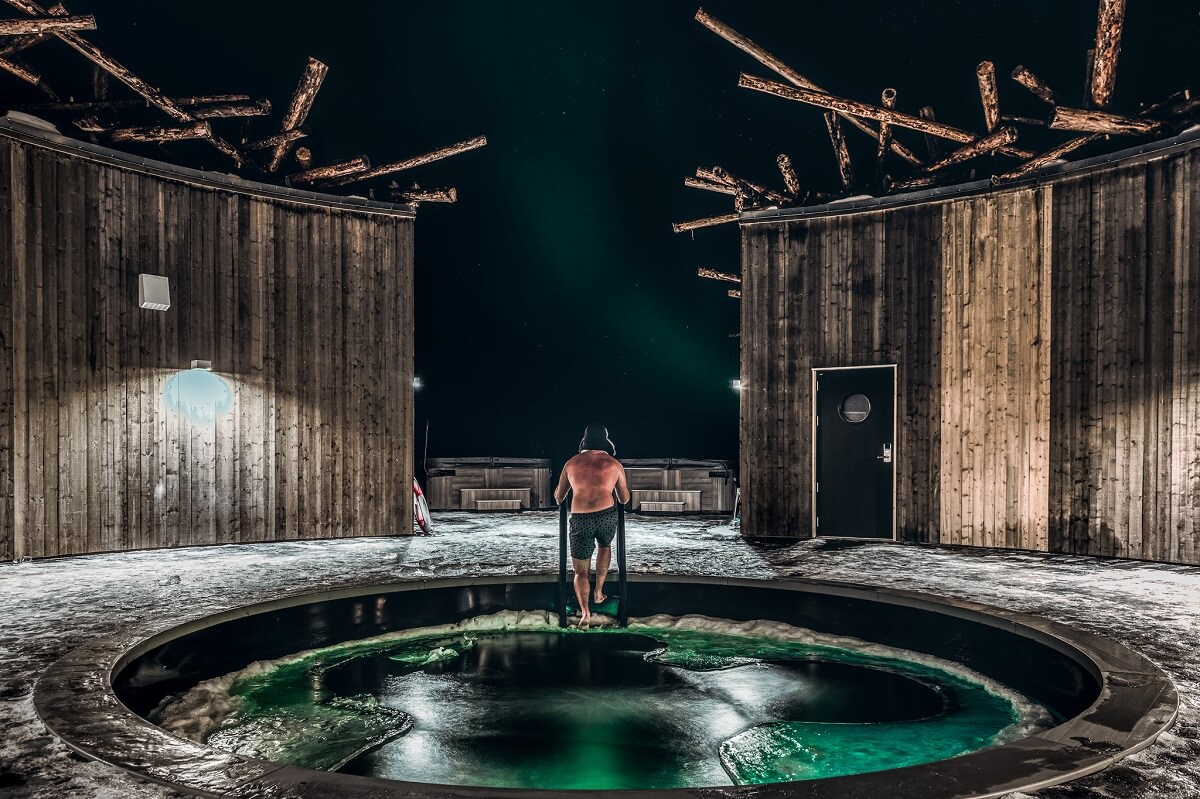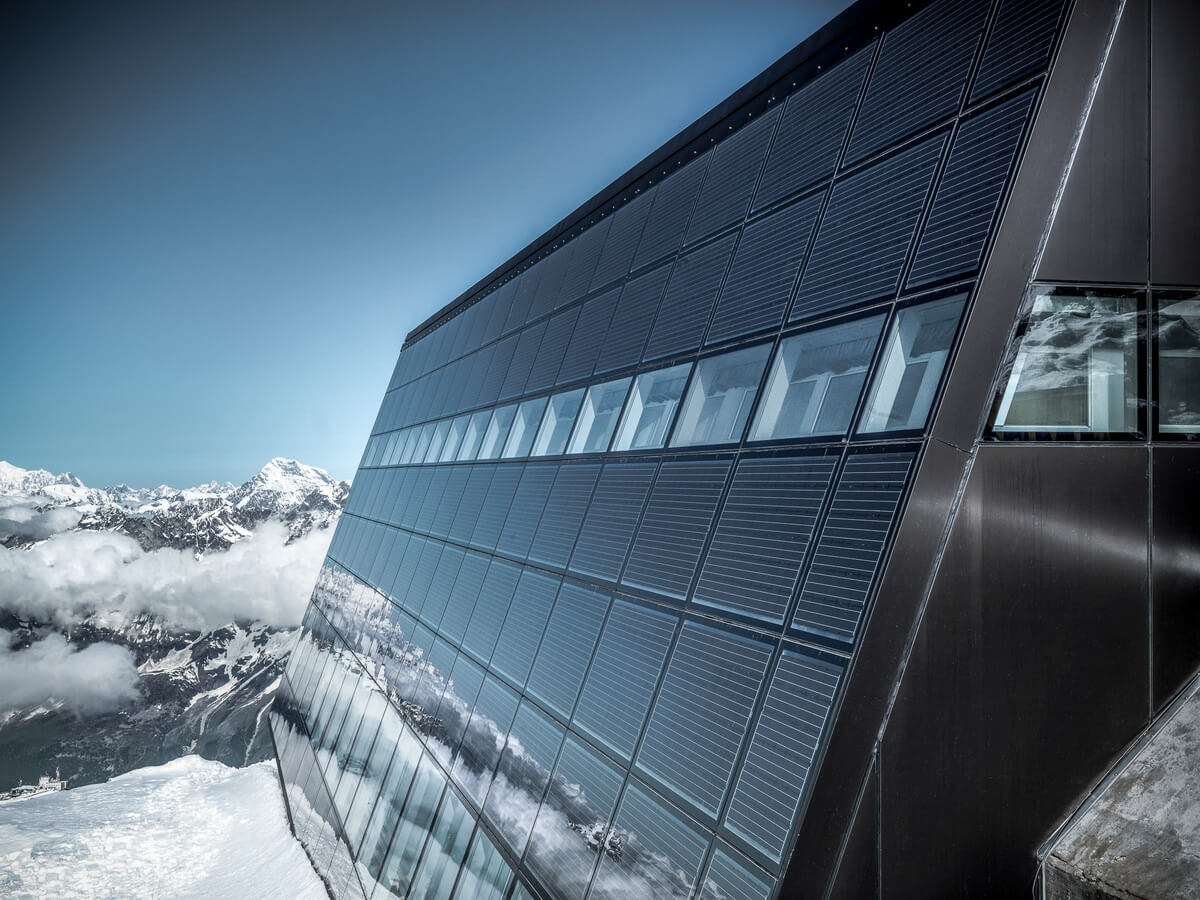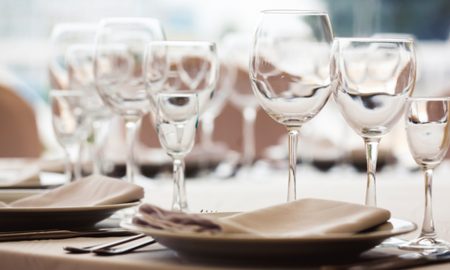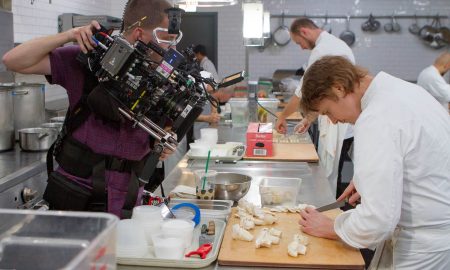As an adventurer, actively embracing loneliness and finding yourself and your inner Chi is one thing. It’s another thing to cater for adventurers on this journey in the middle of nowhere and serve culinary delicacies in addition to offering a cozy place to sleep. This naturally presents chefs and hoteliers in such extremely isolated businesses with unique challenges. Overcoming these challenges requires specialist knowledge, creativity – and the best tools. We took a look behind facades that hardly anyone gets to see, even from the outside – behind the facades of the world’s most remote restaurants. And these are the loneliest restaurants on the planet:
Arctic Bath: Quality at the Edge of Civilization
Ok, so you really have to like temperatures well below freezing – like minus 22 degrees Celsius. And the fact that the sun goes down again almost as soon as it has risen, is not everyone’s thing either. “To work here, you have to have a real passion for cooking,” says David Staf. “And love being surrounded by nature. A lot of nature …”

Image: Viggo Lundberg
David Staf is head chef at Arctic Bath. A floating spa and wellness hotel in a location you’re not likely to stumble across by accident. A hotel you need to actively look for: 50 kilometers south of the Arctic Circle. But thanks to David Staf, this special place offers truly heartwarming, first-class cuisine. This is partly because Staf finds working in such a remote restaurant particularly fascinating. But more on that later.
A Hotel in the River
Opened in 2020, Arctic Bath with its integrated restaurant is located well outside the 500-inhabitant municipality of Harads in Lapland, Sweden. And not just on, but largely in the river Lule. At the heart of the architectural jewel, with its facade of wedged wooden beams reminiscent of the rich tradition of Holzschwemme (waterway for transporting logs), is an open pool that invites you to swim in the river. Yes, even though the region 50 kilometers south of the Arctic Circle is covered in ice and snow for months every year.

Arctic Bath | Image: Daniel Holmgren
In addition to searching for adventurous staff, David Staf has a major challenge to overcome in his role as head chef: “Winter lasts seven months for us. During this time, there is practically no fresh fruit and vegetables. When I took over the kitchen in October 2020, the first thing I did was establish a network of regional suppliers. We start preserving food in the spring .” Just like the Sami farmers who have been working the rough, hostile land for thousands of years: “We preserve seasonal fruit and vegetables by dehydrating, fermenting or pickling them. And we can collect lots of berries and other wild fruit ourselves.”

Image: Arctic Bath
Arctic Bath – Guaranteed Exclusivity
Thanks to the rich nature, the menu in Arctic Bath is anything but monotonous, even during the almost endless winter: “It can sometimes get a bit tricky with scallops, but we have great partners who provide us with fresh seafood daily. And fortunately, we have a lot of wildlife in the area. So we can make the most of reindeer, elk, deer, snow grouse and other wild birds.”
This loneliest restaurant is an exclusive location that can be reached by both car and snowmobile in winter. Guests can also stay overnight here. There are a total of six cabins on land and six on the water or ice. Up to 33 guests can stay overnight here at Lule. And they are spoiled with breakfast, lunch and – as a highlight – a ten-course dinner by David Staf’s five-person kitchen team: “Our restaurant has 18 seats, which are allocated twice every evening.” We don’t get any spontaneous walk-in customers: “This makes planning much easier for us, as we never over- or under-order.” Spontaneous culinary special requests, on the other hand, can pose a problem for obvious reasons: “We need a lead time of 72 hours to contact our suppliers and get the goods delivered as fresh as possible.”

Image: Mats Engfors
Tradition with a Modern Interpretation
The Swede likes to get inspiration from Lapland’s history and landscape for his creations. He has carefully acquired a collection of traditional recipes and now interprets them with a creative flair – not least thanks to modern cooking and kitchen technology. “Our concept is based on authentic dishes, which – as has been the case here for generations – are largely prepared over an open fire. We get employees from all over the world working with us, some of whom have already cooked in large European operations. For them, this is often an exciting change.”
But one thing that connects the kitchen at Arctic Bath with other top restaurants, says David Staf, is the smallest combi-steamer from Rational: “I’ve worked with it before. In my opinion, there’s no better cooking system on the market. This oven is the first cooking system we turn on in the morning and the last one we turn off in the evening.”

Image: Daniel Holmgren
Outstanding Quality is Essential
Even though David Staf is still really young at the age of 33, he can already look back on a long career in gastronomy: “I always knew that I wanted to become a chef, and I started working at the age of 13. I was fascinated by the process of cooking right from the start; especially how things come together when I’m creative with my hands and my head.”
For David Staf, the fact that Arctic Bath’s guests have no viable alternatives to his restaurant and that he could therefore make his cooking less challenging is an inconceivable notion: “I love cooking good food for good people using good ingredients. The day I stop striving to achieve the highest quality is the day I stop working. Because if I were no longer proud of my dishes, I wouldn’t serve them.” Not even in the deepest winter, at the edge of civilization.

Image: Mats Engfors
Matterhorn Glacier Paradise – loneliest restaurant on a glacier
He doesn’t have much time to enjoy the view himself. But the view lives up to what the name Matterhorn Glacier Paradise promises, says someone who ought to know: Chef Claudio Kalbermatten. “On clear days, we can see numerous mountains that are higher than 4,000 meters from our restaurant, and a lot of glaciers on top of them. That’s really unique!”
In fact, Matterhorn Glacier Paradise, located at 3883 meters above sea level on the Swiss side of the Matterhorn, is Europe’s highest restaurant in a mountain station. And this poses several specific challenges. “The most important thing is that our staff must be specifically trained to cope with the conditions,” says Claudio Kalbermatten, referring to the law of physics, which states that the boiling point of water drops with decreasing air pressure: “In simple terms, this means: Water starts to boil at a lower temperature here and therefore faster than at the bottom of the valley.”

Image: Matterhorn Glacier Paradise
The exposed location of this remote restaurant also makes it particularly dependent on the weather, says the Swiss chef: “We have to coordinate the procurement of goods and kitchen logistics with the mountain railway. If the weather prevents the train from running and no guests can come to us, we simply cannot sell our goods. Other restaurants do not face this risk.”
Freshly Cooked for Self-Service
However, the unusual location of this remote restaurant guarantees an advantage that cannot be underestimated when attracting employees: “We can offer working hours that are very attractive for the gastronomy industry: We have to take the last train back to the valley by 4 p.m. at the latest. We don’t have any overtime outside the normal working hours.”
Under optimal conditions, Claudio Kalbermatten and his five-person kitchen crew prepare up to 280 meals per day in the small kitchen. Thanks to the Rational units burgers with the company’s own sauce (“the recipe is our big secret!”) and the rösti dishes, which are particularly popular with international guests, are reliably cooked to the highest quality: “Despite self-service concept in our restaurant, we prepare the rösti fresh for every guest, for example.”
Sieh dir diesen Beitrag auf Instagram an
Highest Quality Even at Extreme Heights
Even though the incomparable location around 600 meters below the Matterhorn summit (at a height of 4,478 meters on the Swiss/Italian border) could already be enough incentive for guests to visit the Matterhorn Glacier Paradise in both summer and winter: Claudio Kalbermatten wants to provide another reason to make the journey with the quality of his food. “Quality must always be the most important criterion for a chef. Even though we automatically attract guests due to our exclusive location, the overall impression must be right. That’s why we set the highest standards in the kitchen. So that we can also offer a unique highlight with our culinary creations.”

Image: Matterhorn Glacier Paradise
And if these two loneliest restaurants are not enough, here are a few more examples of restaurants that can be found in the most unusual and remote places in the world:
El Diablo: Grilling on a Volcano
Lanzarote is one of the eight inhabited Canary Islands in the Atlantic Ocean, just over 1,000 kilometers southwest of the Spanish mainland. In Timanfaya National Park, guests can not only enjoy the view of the volcanic landscape, but also a special type of cuisine: In El Diablo, grilled chicken and co. are prepared directly in the heat of the volcano.
Sieh dir diesen Beitrag auf Instagram an
The Rock: Fisherman’s Friend
The Zanzibar archipelago lies off the coast of Tanzania. And there, just a few meters off the coast of the main island of Unguja (which used to be called Zanzibar itself), is an exclusive restaurant on a small rock opposite Michamvi Pingwe beach: The Rock , as the jewel is appropriately called, was originally an outpost for fishermen. Today, the restaurant, which offers exquisite fish, seafood and pasta specialties, offers 20 guests an incomparable panoramic view of the Indian Ocean by day, and romantic nights under the starry East African sky. The Rock is easy to reach on foot at low tide, but can only be accessed by boat at high tide.
Sieh dir diesen Beitrag auf Instagram an
Furneaux Lodge: Helicopter Please!
The Marlborough Sounds comprise a series of overgrown river valleys in the north of the South Island of New Zealand. Furneaux Lodge is situated in a picturesque, incomparable natural paradise between Queen Charles Sound (also known locally as T⋅taranui) and Kenepuru Sound. The remote complex offers exclusive suites, cabins and cottages – and is not accessible by car. Fortunately, there are alternative methods for globetrotters: helicopter, boat and muscle power on the spectacularly beautiful Queen Charlotte Track.

Image: Furneaux Lodge
Fogo Island Inn: Seven Seasons, Please!
Chinese philosopher Confucius postulated that the path was the destination long before Christ was born – and that was without ever having taken the breathtakingly beautiful ferry trip in the Atlantic to the small Fogo Island. 15 kilometers off the north coast of Newfoundland, there are seven seasons to marvel at – and the most convenient is the luxurious Fogo Island Inn : In addition to spring, summer, autumn and winter, pack ice (March 1 to 31), trap berth season (May 16 to June 30) and berry season (September 1 to October 15) offer unusual customs and culinary specialties.
Sieh dir diesen Beitrag auf Instagram an
Huashan Teahouse: Off to the Monastery
If you want to enjoy a nice cup of tea (and an unparalleled view) in the world’s most remote tea house, Huashan Teahouse , you have to go on foot. And it’s best if you’re also fearless or at least have a good head for heights: Because it takes a two-and-a-half-hour ascent to reach the former monastery on Hua Shan, one of the five holy mountains in the Chinese province of Shaanxi – and not on well-established hiking trails, but on rough terrain, sometimes with extremely steep slopes and over rickety steps and unstable board structures (of course without railings). But remember: The tea is apparently very good.
Nyungwe House: Like Something from The Jungle Book
In the heart of the jungle of the Central African Republic of Rwanda, 230 kilometers outside the capital Kigali, lies the One & Only Nyungwe House. And it offers an abundance of luxury – whether in private villas or quaint tree houses – and the perfect base for trips to the rainforest. The kitchen invites guests to partake in romantic adventures and offers relaxed dining at the infinity pool with a view of the lush greenery, as well as picnics in the middle of the company’s own tea plantation.

Image: Nyungwe House
Wadi Rum Bubble Luxotel: Like Being on Mars
Trips on Mars will probably remain pure wishful thinking for a long time yet. But anyone who really longs for the seclusion of the red planet will really appreciate Wadi Rum Bubble Luxotel in Jordan: In the middle of the rocky and sandy desert, the Wadi Rum Bubble Luxotel is just as exclusive as it is unique: Traditional tents have been replaced by luxurious high-tech bubbles, but the view of the infinite starry sky invites you to dream like in ancient times. Dreams of trips to Mars, for example.
Sieh dir diesen Beitrag auf Instagram an















